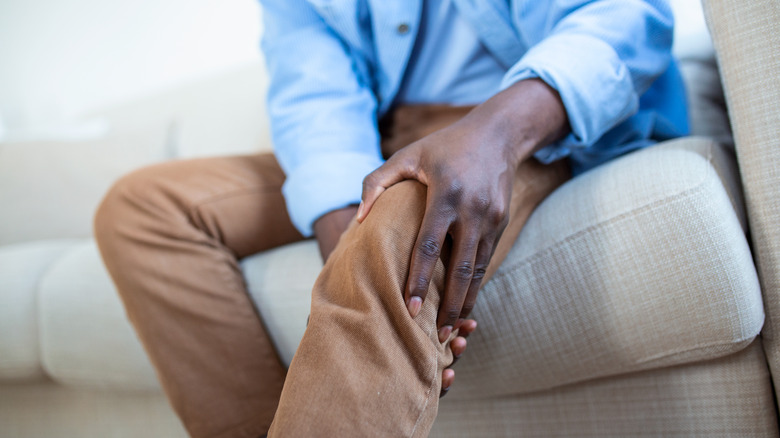Can Weak Hips Contribute To Knee Pain?
Mobility limitations seem to be portrayed as rare situations that only occur in certain unique situations. But the CDC's research makes it clear that they're actually incredibly common. According to their statement, one in seven adults lives with a mobility limitation. This rate makes it one of the most common types of disabilities.
The CDC defines mobility issues as any disability that causes "serious difficulty" walking or using a set of stairs. And the Cleveland Clinic is very clear that the joint primarily responsible for those movements is the hip joint. The clinic even goes so far as to point out that our ability to turn from side to side in addition to our forward and back mobility (not to mention using those stairs) all comes down to our hips.
Unfortunately, there are a lot of things that can weaken these crucial joints. The Cleveland Clinic says that sitting too much and wearing the wrong shoes can contribute to weak hips. Medical News Today adds that more severe conditions like osteoarthritis and cerebral palsy can also weaken the hip joint, though it is important to note that these conditions also present with other symptoms.
Regardless of the cause, hip weakness can seriously affect a person's life. And while many of those effects center around the hip and mobility, they can also spread to other parts of the body.
Weak hips strain the knees
It seems obvious that weak hips will lead to hip pain. But weak hips can also lead to more widespread pain, as described by the NHS. Weak hips can lead to back pain, buttock pain and even pain as low as the knees.
As reported in Reuters as long ago as 2009, researchers found that weakness in the hips and core leads directly to knee pain. Weaknesses in these areas can cause knees to turn in, straining the joints.
The Reuters article focused primarily on runners, but a 2011 entry in the Journal of Orthopaedic & Sports Physical Therapy backed the findings, even in people who do not run. The entry mentioned that knee pain most often appears after exercise but just as often can begin after a person has been sitting too long, both of which are activities that weaken the hip.
To counter this effect, the entry ends with the suggestion to work on hip strengthening exercises to counter knee pain. Self lists twelve different exercises that focus specifically on the hips, ranging from kettlebell swings to side planks with knee drives. The whole workout together might be difficult at first, but taking it a few exercises at a time will improve knee pain and hip weakness at the same time.


